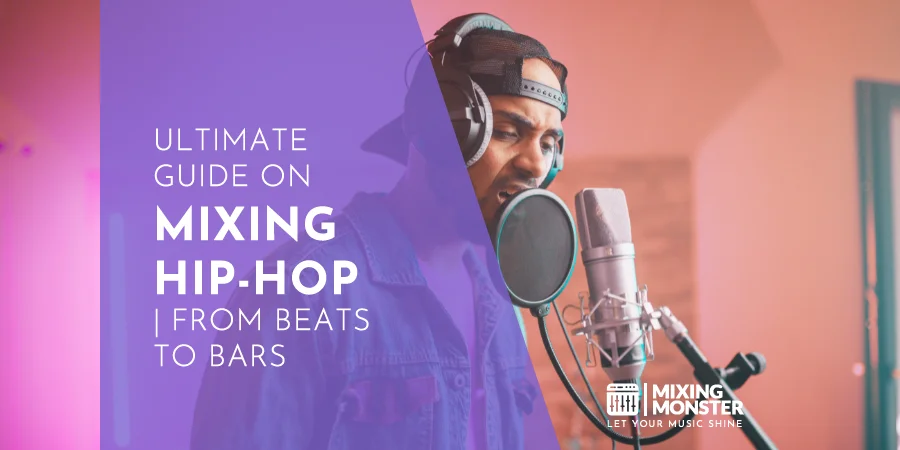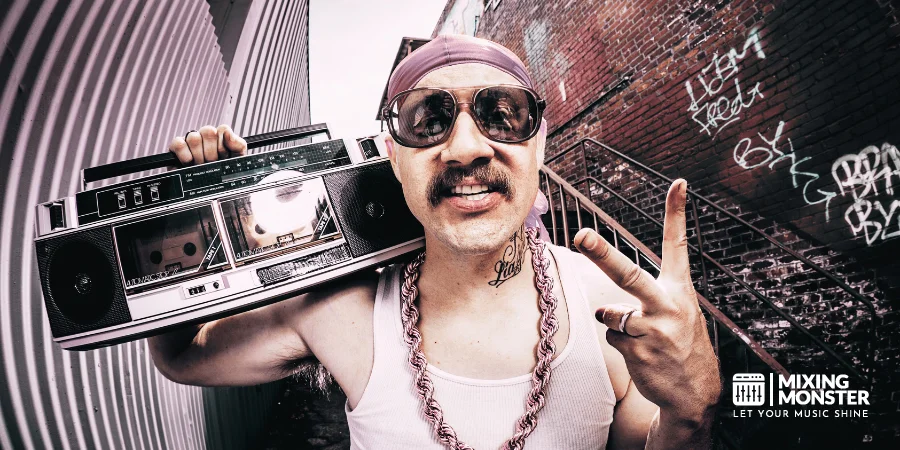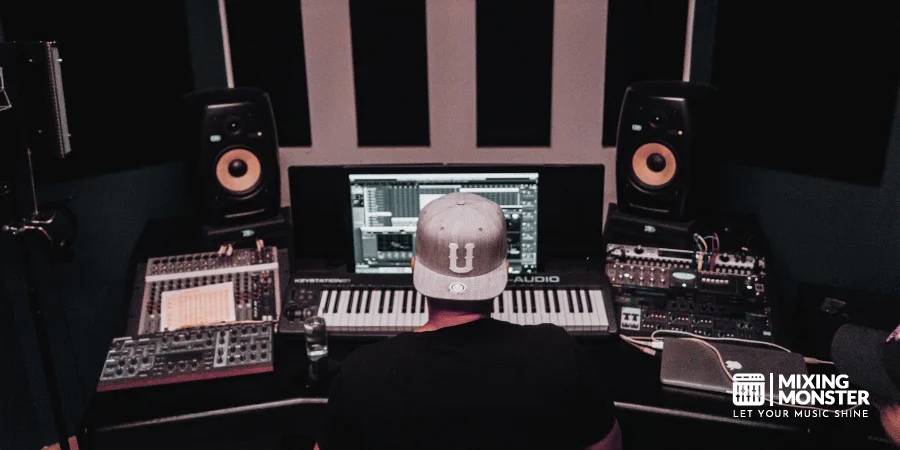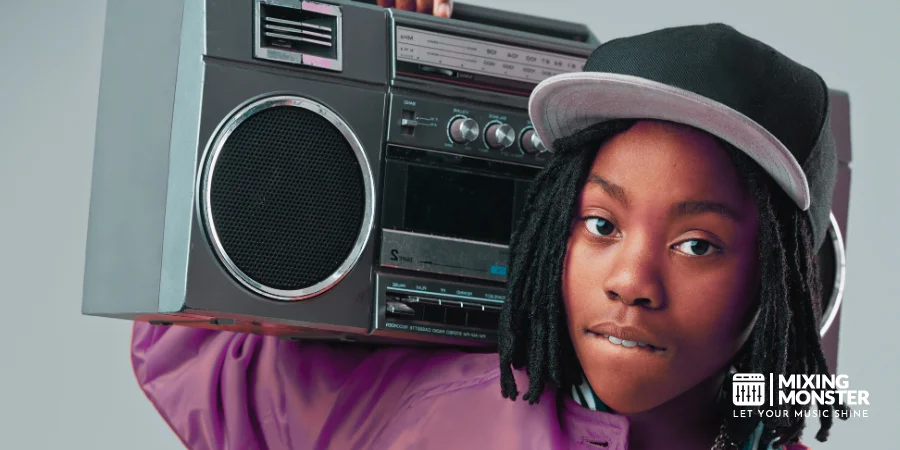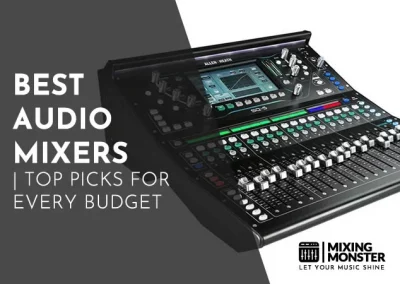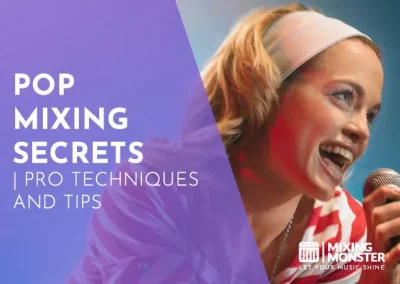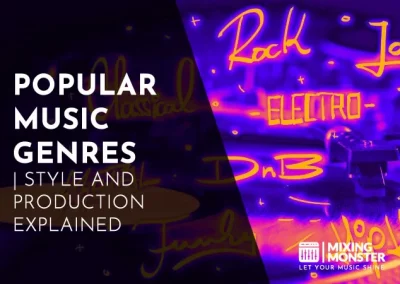Home > Blog > Mixing > Mixing Genres
Disclosure: Some of the links below are affiliate links, meaning that at no additional cost to you, we will receive a commission if you click through and make a purchase. Read our full affiliate disclosure here.
Mixing hip-hop is an art form that can elevate a track from amateur to professional. It takes skill, creativity, and a decent amount of technical know-how to blend all those wild elements into something that hits just right.
Mixing hip hop means adjusting levels, panning, and effects to create a balanced, dynamic sound that brings out the best in the original production. Each part—from vocals to beats—needs to find its spot in the mix. Hip-hop mixing usually leans heavily on bass and drums, but also wants vocals and other details to come through nicely and clearly. Adding depth and character without going overboard is key.
Whether you’re just starting or you’ve been at this for years, understanding the quirks of hip-hop mixing can really level up your tracks. This guide covers some essential techniques, common mistakes, and a few advanced tricks that’ll help you shape mixes that actually connect with people—and do your creative ideas justice.
KEY TAKEAWAYS:
- Balancing levels and using effects well are crucial for a pro hip-hop mix
- Knowing the unique qualities of hip-hop elements helps make tracks gel
- Practice and experimentation matter way more than you’d think
Table Of Contents
1. The Fundamentals Of Mixing Hip-Hop
2. Pro Techniques For Hip-Hop Mixing
3. Hip-Hop Mixing Tips
4. Common Hip-Hop Mixing Mistakes To Avoid
5. Advanced Hip-Hop Mixing Tips
6. Step-By-Step Guide To Mixing Hip-Hop
7. Key Takeaways For Mixing Hip-Hop
FAQ

1. The Fundamentals Of Mixing Hip-Hop
Mixing hip-hop isn’t just about pushing faders. You need to juggle powerful vocals and dynamic beats, and honestly, having the right gear makes a world of difference.
Understanding The Hip-Hop Sound
Hip-hop mixing revolves around creating a balanced, dynamic sound. Basslines, punchy drums, and clear vocals—those are your leading players.
Producers love to use samples for that signature flavor. A spectrum analyzer can help you spot frequency clashes before they get out of hand.
Most hip-hop tracks run with less headroom than other genres, so you’ve got to be careful with your gain staging. Keep the mix impactful, but don’t let it distort.
Essential Equipment For Hip-Hop Mixing
A solid digital audio workstation (DAW) is non-negotiable. FL Studio and Pro Tools are big favorites, but honestly, use what feels right.
Good studio monitors or headphones are a must for hearing what’s really going on. A subwoofer helps you keep tabs on the low end—super handy for hip-hop.
You’ll want plugins for compression, EQ, and effects. Analog emulation plugins can warm things up and add some real vibe to your tracks.
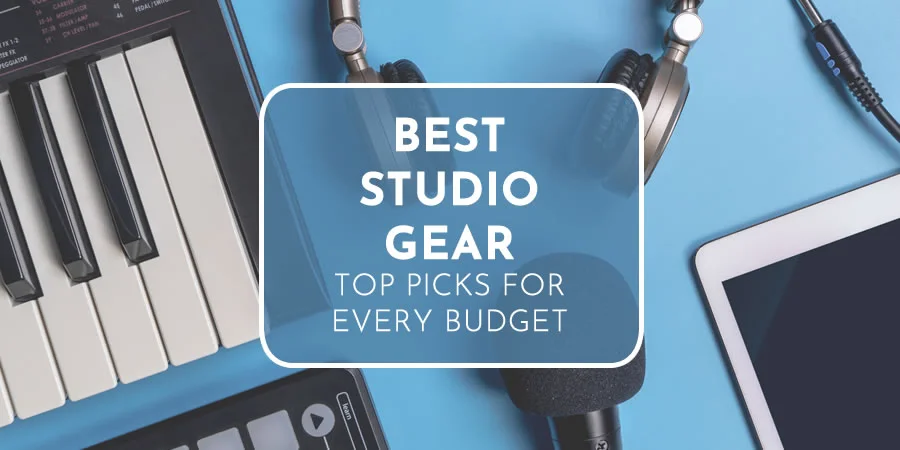
The Importance Of Proper Gain Staging
Get your gain staging right, or nothing else will matter. It keeps your tracks from clipping and leaves enough room for everything to breathe. Dial in your track levels in the DAW—shoot for peaks around -18 dB to -12 dB on each channel.
Throw a gain plugin at the top of your channel strip to even out input levels. It’s a simple move, but it keeps your mix consistent. Good gain staging is what gives your hip-hop mix that punch and clarity, especially when you’re working with heavy bass.
Balancing Vocals And Beats
Vocals are usually the star in hip-hop. You want them clear and upfront—no hiding behind the beat.
EQ the mids (2 kHz – 7 kHz) to make space for vocals. That’s where they really shine.
Compress those vocals to keep them steady. Rap vocals usually like a 4:1 or 6:1 ratio—keeps everything tight.
Kick and bass need to play nice together. Don’t let them step on each other’s toes. Try sidechain compression on the bass, triggered by the kick, to carve out that low-end space.
2. Pro Techniques For Hip-Hop Mixing
Mixing hip-hop at a pro level means combining technical chops with creative choices. Master EQ, compression, saturation, and spatial effects if you want that polished, hard-hitting sound everyone’s after.
EQ Strategies For Clarity And Punch
EQ is your best friend for shaping hip-hop tracks. A high-pass filter at 20-30 Hz clears out rumble and lets your kick and bass breathe.
Boosting vocals around 3-5 kHz brings them forward. Cutting in the 200-500 Hz range can clear up mud.
Want a punchy kick? Try boosting 60-80 Hz for weight and 3-5 kHz for snap. Snares usually pop with some love in the 200-300 Hz and 5-8 kHz ranges.
Bass often needs subtractive EQ. A gentle cut around 300-500 Hz can prevent the low-mids from getting crowded.
Compression: Taming Dynamics In Hip-Hop
Compression keeps hip-hop tracks under control and adds vibe. For vocals, use a fast attack (1-5ms) and a medium release (50-150ms) to keep them present.
Hard compression on rap vocals (4:1 ratio or higher, 6-10 dB gain reduction) gives that upfront, aggressive sound.
For drums, it depends. Slow attack (10-30ms) on kicks keeps the punch; snares like faster attacks (1-5ms) for that crack.
Parallel compression (aka New York compression) is a classic—blend a squashed signal with the origin to add excitement to drums and bass without killing dynamics.
Using Saturation For Warmth And Character
Saturation brings out warmth and richness. Subtle saturation on 808s helps them cut through on tiny speakers by adding harmonics.
Vocals get a cool vintage edge from tape or tube-style saturation. Usually, just 1-3 dB of drive is enough.
Drum samples—especially vinyl ones—sound more alive with a bit of saturation. Try out tape, tube, or transistor emulations until something clicks.
Bass can get clearer and more present with a hint of saturation, especially if you’re working with synths that feel flat.
Spatial Effects: Reverb And Delay In Hip-Hop
Hip-hop mixes are often on the dry side, but a touch of reverb or delay can add some real magic. Short room reverbs (0.5-1.5s) on snares and vocals add space without losing tightness.
Plate reverbs give vocals and melodies a vintage flavor. Use pre-delay (20-40ms) so the reverb doesn’t blur the dry signal.
Delay is excellent for space and rhythm. Slap delays (80-120ms) widen vocals without pushing them back.
Want something more rhythmic? Sync your delays to the track’s tempo. Dotted eighth notes often groove nicely without cluttering up the mix.

3. Hip-Hop Mixing Tips
Dialing in a hip-hop mix means paying attention to vocals, bass, and the overall vibe. The right moves can take your tracks from “meh” to “damn, that’s clean.”
Vocal Processing Secrets
You can’t fake clear, punchy vocals in hip-hop. Engineers lean on compression to even out dynamics and bring vocals forward. Ratios of 4:1 to 6:1 with quick attack and release usually work for rap.
EQ helps vocals cut through. A little boost at 3-5 kHz works wonders. Cutting muddy stuff between 200 and 500 Hz makes them sit better.
Delay throws spice things up. Short delays (30-80ms) add width; longer ones (1/4 or 1/8 note) bring rhythm. Try automating delay on particular words to keep things interesting.
De-essing and solid gain staging help keep vocals clear but not harsh.
Bass Management Techniques
Hip-hop is nothing without massive bass. 808s and basslines need careful handling, or things get muddy fast. High-pass filter below 30-40 Hz to clear out sub-bass you don’t need. That leaves room for the kick.+
Saturation brings out harmonics, making the bass audible on small speakers. A touch of distortion can help it cut through on phones.
Sidechain the bass to the kick—duck it 2-4 dB when the kick hits for clarity.
Layered bass? Use EQ to give each part its own space. That way, nothing gets lost.
Creating Space In Dense Mixes
Hip-hop productions get crowded quickly. Good panning and EQ are your secret weapons.
Use the stereo field smartly:
- Keep bass, kick, and main vocals in the center
- Pan hats, snares, and synths for width
- Alternate panning for call-and-response vocals
Carve out frequencies to avoid overlap:
- Find clashing frequencies
- Cut 2-3 dB from less important sounds
- Boost complementary spots for separation
Reverb adds depth, but go easy. Short decays (0.8-1.2s) keep things clear but still roomy.
Automation For Dynamic Mixes
Automation takes a flat mix and brings it to life. Volume, effects, and EQ moves keep things moving and highlight the big moments.
Automate volume to shape the song:
- Push up the chorus for impact
- Duck instruments during vocals
- Fade in new parts for smooth transitions
FX automation adds flavor:
- Crank up snare reverb for build-ups
- Automate synth filter cutoffs for movement
- Drop in tape stops or pitch shifts for transitions
Use EQ automation to shift the tone as the track moves along subtly—keeps listeners on their toes.
Automating volume and filters on 808s can fake pitch bends and give basslines some extra life.

4. Common Hip-Hop Mixing Mistakes To Avoid
Mixing hip-hop takes a good ear and attention to detail. If you’re not careful, a few common missteps can drag your mix down fast.
Overcompression: Killing The Vibe
Overcompression happens all the time in hip-hop mixing. It can totally flatten the dynamic range and suck the life out of a track.
Excessive compression makes things sound dull and flat—mainly drums and vocals, which really need to keep their punch and vibe.
So, use compression wisely. Start with gentle ratios, adjust the threshold with care, and try to control peaks without crushing everything else.
Try parallel compression techniques to keep those transients alive while still adding some thickness to your sound.
Watch your attack and release settings. If you set the attack too fast, you’ll lose the snap of your transients. Go too slow on the release, and you might get some weird pumping artifacts.
Neglecting The Mid-Range
The mid-range is absolutely crucial in hip-hop, but many folks ignore it. If you skip this frequency range, your mix can sound thin or hollow.
Pay extra attention to stuff like snares, vocals, and synths that sit right in the mid-range. Use EQ carefully so these elements cut through without stepping on each other.
When you boost mid-range on bass instruments, do it sparingly. Sure, it can add some nice definition, but too much and you’re just asking for mud.
Mid/side processing can help you widen the stereo image of mid-range elements. That way, you get some width without messing up mono compatibility.

Improper Use Of Limiting
Limiting is key for getting that loud, competitive hip-hop sound, but it’s easy to overdo it. Push it too hard, and you’ll squash your dynamics or even end up with distortion.
Start with a pretty safe threshold and lower it slowly. Keep an ear out for lost transients or any drop in clarity.
Instead of slamming a limiter once, try using a couple of gentle stages. That keeps things sounding more natural.
Watch your loudness levels. It’s all about finding that sweet spot—enough impact, but you don’t want to kill the track’s dynamics.
Using a limiter with oversampling can help tame aliasing artifacts when you’re hitting high gain reduction.
Ignoring Mono Compatibility
Lots of people listen in mono—phones, clubs, whatever—so mono compatibility matters a lot in hip-hop. If you don’t check this, you might run into phase issues or lose parts of your mix when summing to mono.
Check your mix in mono regularly. Listen for anything that vanishes or loses punch.
Be careful with stereo widening effects, especially on the low end. These can really mess with your mix in mono.
Use correlation meters to monitor the phase relationship between your left and right channels. Try to keep things positive on the low end.
Mid/side EQ is handy for shaping the stereo width of specific frequencies without wrecking mono compatibility.

5. Advanced Hip-Hop Mixing Tips
Once you’ve nailed the basics, advanced mixing techniques can really take your hip-hop tracks up a notch. These approaches add depth, groove, and that pro-level polish everyone’s after.
Parallel Processing For Punchier Drums
Parallel processing is a go-to for punchy drums that don’t lose their dynamics. Basically, you duplicate your drum track, compress the copy heavily, and then blend it back with the original.
Here’s how you can do it:
- Duplicate your drum bus
- Hit the duplicate with heavy compression
- Blend the original and compressed tracks to taste
This gives you hard-hitting drums that still keep their snap and dynamics. Play around with compressor settings and ratios—finding the sweet spot is half the fun.
If you want to get creative, try dropping a Stutter Edit on the parallel drum track. It’s a terrific way to add rhythmic twists and textures.
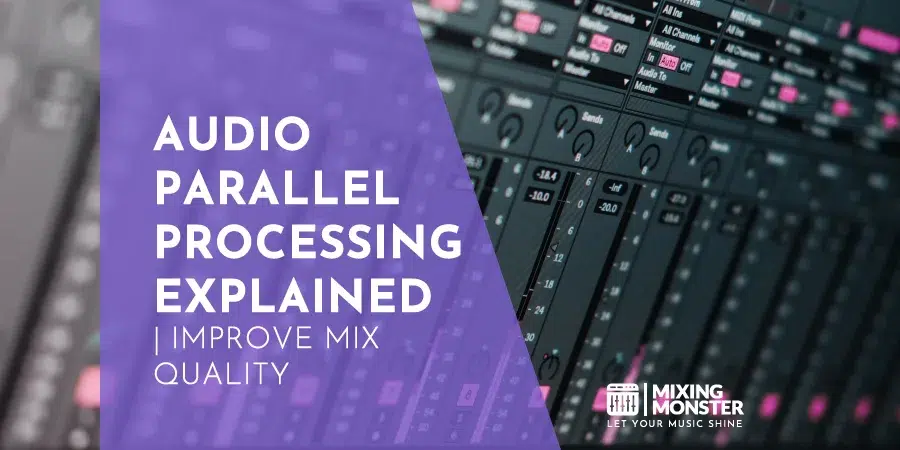
Sidechain Compression For Groove
Sidechain compression is a staple for carving out space and adding groove in hip-hop mixes. Usually, you set the kick drum to trigger compression on the bass.
To set it up:
- Put a compressor on your bass track
- Feed the kick into the sidechain input
- Tweak threshold, ratio, and release until it feels right
This creates that pulsing effect—your bass ducks out of the way every time the kick hits, so nothing’s fighting for space. You can also sidechain synths or samples for a more obvious pumping vibe.
Try different release times. Faster ones make the pumping more obvious; slower ones keep it subtle. Go with whatever fits your track’s groove.
Creative Use Of Distortion And Saturation
Distortion and saturation are fantastic for adding flavor and warmth to hip-hop. Sometimes you want a touch of harmonics, other times you want things to sound gritty and raw.
Some ideas:
- Give 808s a hint of distortion so they pop on small speakers
- Use tape saturation on drums for that analog vibe
- Try tube distortion on vocals for extra presence
Don’t go overboard—just a little distortion can make your tracks come alive. It’s all about balance.
Mix and match different types. Some gentle tape saturation on your drum bus, then crank up the tube distortion on a lead synth. You never know what’ll sound best until you try.
Layering Techniques For Fuller Mixes
Layering is a must if you want your hip-hop mixes to sound big and full. You basically stack up different sounds to build something more complex and interesting.
Some effective layering moves:
- Layer kicks—a deep subby kick plus a punchy top kick
- Stack snares—blend acoustic and electronic for more depth
- Combine 808s with synth basses to fill out the low end
Watch out for phase issues and carve out space with EQ for each layer. That’s how you keep things clear instead of muddy.
Try adding filter sweeps and modulation to your layers. It keeps things moving and gives your track more life from start to finish.
6. Step-By-Step Guide To Mixing Hip-Hop
Mixing hip-hop isn’t just about throwing up some faders—it’s all about the details and having a solid game plan. Here’s a step-by-step that works for most projects.
| Step | Description |
|---|---|
| 1. Prepare Session | Organize tracks, set tempo, create groups |
| 2. Set Levels | Balance volumes, pan elements |
| 3. EQ & Compress | Shape frequencies, control dynamics |
| 4. Add Effects | Apply reverb, delay, saturation |
| 5. Finalize Mix | Make final adjustments, export |

Preparing Your Session
First things first: get your session organized. Group similar elements—drums, vocals, instruments—so you can move fast and keep things tidy.
Set the tempo right away. It keeps everything locked in rhythm-wise. Most DAWs make tempo changes painless.
Pick a couple of reference tracks in the same style as your project. Compare your mix to these as you go—it’s a reality check that really helps.
Color-code your tracks and drop in markers for different song sections. It’s a little thing, but it seriously speeds up your workflow.
Setting Levels And Panning
Get your volumes balanced before you do anything else. Usually, start with the drums—they’re the backbone. Set your kick and snare, then build the rest around them.
Panning is how you get width. Keep the low stuff (kick, bass) dead center: Pan hi-hats, percussion, and synths out to the sides to make room.
Automate your volume rides so key moments stand out and nothing gets lost. It’s worth the extra effort. Use a VU meter or similar tool to keep an eye on your levels. Try to keep your peaks around -6 dB so there’s room for mastering later.
Applying EQ And Compression
EQ shapes your sound. Roll off unnecessary lows on non-bass tracks to clear up mud. Boost highs on hats and snares for some sparkle.
Compression keeps things tight and punchy. Go easy on individual tracks, then use bus compression for groups. For vocals, stacking a couple of compressors can help keep levels steady.
Mixing hip-hop vocals usually means dealing with sibilance. Use a de-esser plugin or automate out the harsh bits.
Sidechain your kick and bass so they don’t fight each other. It’s a classic move that always helps.

Adding Effects And Finalizing The Mix
Reverb adds depth, but don’t overdo it—short reverbs for drums, longer tails for vocals or melodies. Too much on the low end, and things get muddy fast.
Delay is excellent for filling out space. Ping-pong delay on background vocals or synths can really widen things up.
Saturation or distortion can add extra warmth to drums and bass. Just nudge it in—you don’t want things to sound harsh.
At the end, tweak your balances, check against your references, and listen on a few different speakers or headphones.
Apply a limiter on the master bus to catch peaks and boost loudness. Always leave a little headroom for mastering when you export.

7. Key Takeaways For Mixing Hip-Hop
Mixing hip-hop really is its own beast. You’ve got to focus on the right stuff to get that polished, professional sound.
Parallel compression is a must for punchy drums and bass. It gives your beats real weight and presence.
Vocals are front and center in hip-hop—always. Please make sure they’re clear and sit right on top of the mix so every word lands.
Strong beats drive hip-hop. Your mix should make them hit hard and keep the energy up all the way through.
Some key things to remember:
- Keep your bass and low-end tight and balanced
- Use EQ to create space for everything
- Don’t go crazy with compression—preserve those dynamics
- Stereo imaging adds width and depth
- Add subtle effects for flavor, but don’t let them take over
Happy Hip-Hop Mixing!

FAQ
1) What are the key techniques in mixing hip-hop vocals?
Hip-hop vocal mixing really comes down to clarity and presence. Engineers usually grab an EQ to bring out the midrange and upper mids (that 2 kHz-7 kHz sweet spot) for punch and intelligibility.
Compression keeps the dynamics in check and adds a bit of punch. De-essing knocks back those harsh sibilant sounds. Most folks use reverb and delay sparingly—just enough to add depth without muddying up the vocals.
2) Can you describe the process for mastering a hip-hop song?
When it’s time to master a hip-hop track, you’re balancing frequencies, tweaking stereo width, and pushing for that loud, clean sound. EQ comes in handy for dialing in the overall tone.
Multiband compression tightens up the low end and controls dynamics across the spectrum. Then there’s limiting, which boosts perceived loudness but—hopefully—avoids nasty distortion.
3) What equipment is essential for a hip-hop vocal chain?
You want a solid microphone, preamp, and audio interface as your base. Large-diaphragm condensers or dynamic mics with some bite are popular picks for hip-hop vocals.
Of course, you’ll need a reliable DAW (Digital Audio Workstation). EQ, compression, and effects plugins round out the setup, letting you really shape and process the vocals just how you want.
4) What are some critical hip-hop production tips?
Sample selection and manipulation sit at the core of hip-hop production. Producers should dig for unique sounds and get creative with how they process them.
Layering drums and using sidechain compression can give your beats some real punch. Paying attention to arrangement and dynamics keeps the track interesting—nobody wants to listen to a loop on repeat for three minutes, right?
5) How can one learn to mix hip-hop beats effectively?
Listening to pro mixes and just practicing a ton is the best way to get better at mixing hip-hop. There are loads of online courses and tutorials out there with great mixing techniques to try.
Messing around with different processing chains and A/B testing your results sharpens your ear. And collaborating with other producers? That’s a fast track to picking up new tricks.
6) What are some common challenges when mixing rap vocals?
Balancing vocals with dense instrumental tracks can be tricky. You really have to lean on EQ and compression to help the vocals stand out—otherwise, it all gets muddy fast.
Keeping clarity in rap vocals when the track’s loaded with bass? That’s a whole other headache. You’ve got to watch those frequencies and tweak mix levels so nothing steps on the words.

